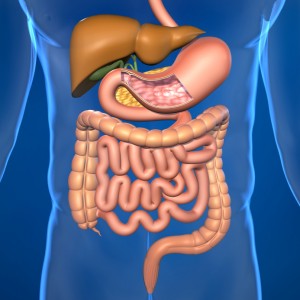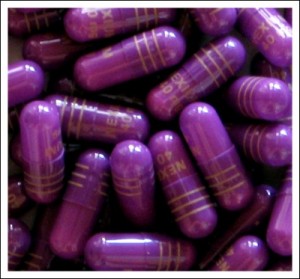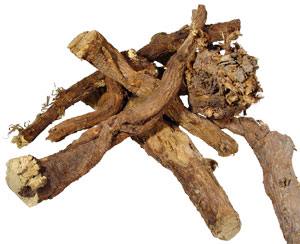The Road to Health is Paved with Good Intestines #3: The Esophagus
 When last we left our journey through the digestive tract, we had prepared ourselves to eat in a relaxed state; we took a bite of food, and chewed it well to get the digestive process started. Now its time to swallow.
When last we left our journey through the digestive tract, we had prepared ourselves to eat in a relaxed state; we took a bite of food, and chewed it well to get the digestive process started. Now its time to swallow.
We go through the act of swallowing countless times a day and think of it as a mindless act. In actuality, swallowing is the last step in the digestive process that we have conscious control over. Once we have swallowed that bite of food, it has begun its 30 foot journey that can last any where from 12 hours to days depending upon how well things are working.
The first part of that journey takes it through the esophagus, a muscular tube that is about 9 inches in length in adults. The job of the esophagus is mainly to transport the food that has begun the digestive process to the stomach so that is can be broken down further. Motion in the esophagus should be in only one direction- down to the stomach. When digestion is working well and if you have chewed your food appropriately, you shouldn’t really notice your esophagus.
Unfortunately, many things can cause this process to go awry, and allow the acid and digestive enzymes of the stomach (sometimes along with some of the digested food) to come back up into the esophagus. This is what happens when you experience reflux or heartburn. While the stomach has a nice protective coating so that the acid does not irritate it, the esophagus does not have this. So when acid comes up into the esophagus, it burns and causes discomfort.
If this happens occasionally after over eating a large meal, or laying down too soon after you eat, it is not a big deal. However, when this occurs on a regular basis, the acid can cause damage to the esophagus and even increase the risk of ulceration and cancer in the esophagus. This chronic reflux is called GERD or Gastro Esophageal Reflux Disease.
 While this condition was hardly recognized thirty years ago, it has grown to almost epidemic proportions with 30 to 60 million people in the US suffering with it each year. It has sparked a huge industry of medications designed to neutralize or block the production of stomach acid. Sales of these acid blocking medications accounted for more than $13 billion dollars last year. The direct marketing commercials have become routine on television and in magazines with competition between little purple pills and berry flavored pills. It has become so common for people to be taking one of these medications that you would think stomach acid was an evil thing.
While this condition was hardly recognized thirty years ago, it has grown to almost epidemic proportions with 30 to 60 million people in the US suffering with it each year. It has sparked a huge industry of medications designed to neutralize or block the production of stomach acid. Sales of these acid blocking medications accounted for more than $13 billion dollars last year. The direct marketing commercials have become routine on television and in magazines with competition between little purple pills and berry flavored pills. It has become so common for people to be taking one of these medications that you would think stomach acid was an evil thing.
While we shall see in the next blog that stomach acid is actually important and there can be negative consequences to not having enough of it, too much stomach acid is rarely the underlying cause of heartburn and GERD.
More commonly the problem is associated with weakness of the gate or lower esophageal sphincter (LES) at the bottom of the esophagus that is supposed to keep the acid out of the esophagus. This gate can become weakened by overeating, being overweight, food sensitivities, smoking, coffee, not chewing your food well before swallowing, and not being in a relaxed or parasympathetic state when you are eating.
Reducing reflux can often be as easy as:
- Following the advice in the first two blogs of this series by being in a relaxed state when you eat and taking the time to chew your food well before swallowing
- Avoiding foods that can weaken the lower esophageal sphincter (LES) such as tomatoes, onions, citrus, citrus, peppermint, caffeine, and alcohol
- Discovering and eliminating hidden food allergies or sensitivities to foods such as wheat, dairy products, corn, and soy.
- Quitting smoking
- Working on stress reduction
- Working on achieving an optimal body weight.
- Not laying down too soon after eating.
While you are working on making these changes, there are a couple of natural supplements that can help reduce the severity of heartburn or GERD.
 The first is a form of licorice called deglycerrhizinated licorice or DGL. Licorice has been used for centuries for its soothing effect on the entire gastrointestinal tract. It helps to increase the mucous production of the lining of the esophagus, protecting it from the irritation of stomach acid. While there is concern with regular intake of whole licorice as it can raise blood pressure in some people, DGL has had the blood pressure raising component taken out. This makes it safe to take on a regular basis while you are working on the underlying causes of your heartburn or reflux. Because we want the effects of the licorice to help the esophagus it is important to use DGL products that are powders or chewable wafers. Chewing 1 to2 of these tablets before meals or when you first start to feel reflux coming on can help to quench the fire without suppressing your digestive function.
The first is a form of licorice called deglycerrhizinated licorice or DGL. Licorice has been used for centuries for its soothing effect on the entire gastrointestinal tract. It helps to increase the mucous production of the lining of the esophagus, protecting it from the irritation of stomach acid. While there is concern with regular intake of whole licorice as it can raise blood pressure in some people, DGL has had the blood pressure raising component taken out. This makes it safe to take on a regular basis while you are working on the underlying causes of your heartburn or reflux. Because we want the effects of the licorice to help the esophagus it is important to use DGL products that are powders or chewable wafers. Chewing 1 to2 of these tablets before meals or when you first start to feel reflux coming on can help to quench the fire without suppressing your digestive function.
Bitter herbs have been consumed before and after meals for centuries to help stimulate digestive function. While bitters have become most commonly used now as a component of cocktails, digestive bitters can be effective at reducing the occurrence of heartburn. Taking the bitters in a small amount of room temperature water 10 minutes before meals can help to stimulate your digestive function and put an end to the burning discomfort.
The amount of bitters that you should take is going to vary from product to product, so look at the instructions on the package to determine how much to take.
While these natural remedies can be helpful, if you are experiencing frequent heartburn or reflux, it is important to figure out the underlying cause and correct it. Working with a naturopathic doctor or Functional medicine practitioner can be helpful for determining and treating those underlying causes without impairing digestive function by inhibiting the production of stomach acid.
In the next blog we will move into the stomach, learn more about the important actions of stomach acid and curious bacteria called H. pylori.
